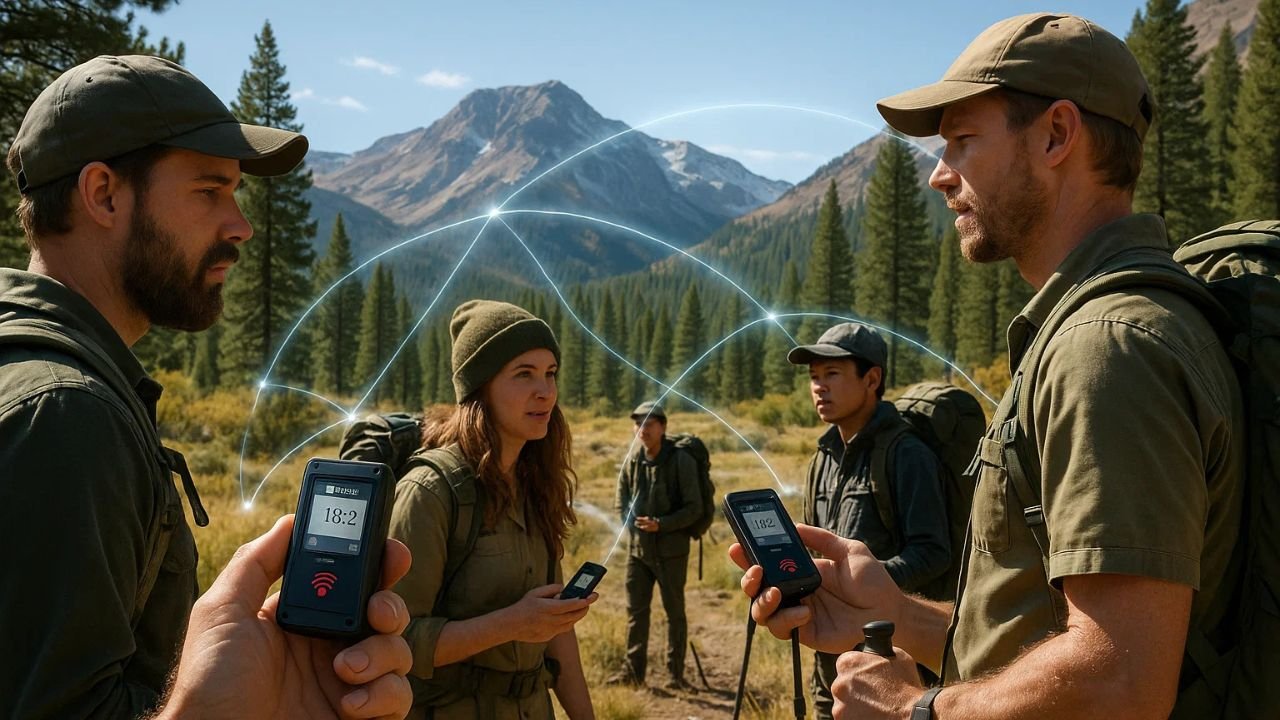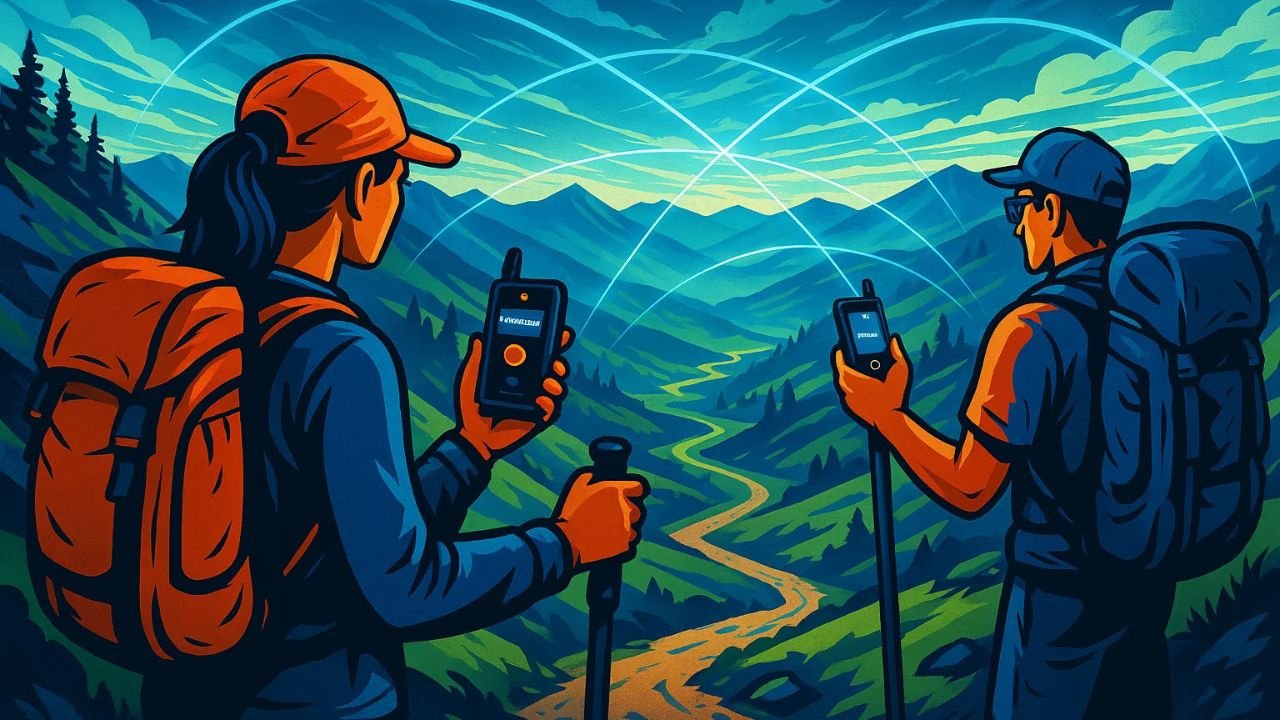Introduction: Why Meshtastic is Gaining Popularity Across the US
In recent years, outdoor enthusiasts and emergency preparedness communities in the United States have been buzzing about a unique communication tool Meshtastic. This open source, low cost technology is giving hikers, campers, and preppers a reliable way to stay connected without relying on cell towers or the internet. With wildfires in California, hurricanes in Florida, and the growing popularity of remote hiking trails, Meshtastic networks are becoming a game changer for anyone who ventures into areas with poor or no connectivity.

What is Meshtastic?
Meshtastic is an open source communication system that uses LoRa (Long Range Radio) technology to send text messages, GPS locations, and other data without the need for mobile networks, Wi-Fi, or satellites. Users connect a small LoRa device to their smartphone via Bluetooth and use the Meshtastic app to communicate.
Because it’s open source, developers and tech enthusiasts in the US are constantly adding features, making it more flexible than commercial walkie talkies.
How Meshtastic Works: The Mesh Network Explained
The magic behind Meshtastic networks lies in the “mesh” concept.
- Each Meshtastic device acts as a node.
- Messages pass through several devices before reaching their destination
- Even if you’re out of direct range, your message can “hop” through other nodes in the network.
For example:
If you’re hiking in Colorado with no cell signal, your message can pass from your device to another hiker’s device, and then to a friend several miles away. The more devices in the area, the stronger and more reliable the network becomes.
Why Meshtastic is Perfect for US Hikers
1. Coverage Without Cell Towers
Many hiking trails in the US, like those in Yosemite or the Appalachian Mountains, have zero mobile coverage. Meshtastic networks allow hikers to share locations, weather alerts, and safety updates without relying on expensive satellite messengers.
2. Lightweight and Portable
Meshtastic devices are small enough to fit in a pocket or clip to your backpack. They work for days on a single charge, which is ideal for multi-day hikes.
3. Group Communication
If you’re hiking with friends, a Meshtastic mesh network can keep everyone in touch, even if the group spreads out.
Why US Preppers Are Adopting Meshtastic
Preppers people who prepare for emergencies value reliable communication when traditional systems fail. In the US, extreme weather events, cyberattacks, and even regional power outages can disrupt phone networks. Meshtastic offers:
- Offline messaging during emergencies.
- GPS location sharing to coordinate family members.
- Community networks that can span neighborhoods without any internet.
In states like Texas, Florida, and California, prepper communities are already building permanent Meshtastic mesh networks to stay ready for any disaster.
Setting Up Your First Meshtastic Device (Step-by-Step)
If you’re new to Meshtastic, getting started is simple:
- Buy a LoRa device (popular models: T-Beam, Heltec, LILYGO) — prices start around $30.
- Install the Meshtastic app on your smartphone (Android or iOS).
- Pair via Bluetooth with your device.
- Set up your channel (private or public) and encryption settings.
- Test your range with a friend before heading out.
Pro tip for US hikers: If you’re going into remote areas, carry an extra battery pack to keep your device running for extended trips.
Best Meshtastic Devices for US Users
- LILYGO T-Beam – Best for long range (10+ miles in open areas).
- Heltec V3 – Compact, great for hikers who want lightweight gear.
- LILYGO T-Echo – Designed for portability with a built-in display.
These devices are widely available on Amazon and other online US electronics retailers.
Limitations of Meshtastic
While Meshtastic is powerful, it has a few limits:
- Not for voice calls – Only text and data transmission.
- Range depends on terrain – Mountains and buildings can reduce signal reach.
- Needs more users nearby – The network is stronger when more devices are in range.
Still, for most hikers and preppers in the US, these limitations are minor compared to the benefits.
Future of Meshtastic in the US
The future looks bright for Meshtastic networks. With open source development, US tech hobbyists are already adding features like:
- Weather station integration for real-time updates.
- Longer range antennas for rural areas.
- Emergency alert systems for disaster zones.
As more US communities adopt this technology, it’s possible that Meshtastic could become a standard tool for outdoor safety and emergency preparedness.
Safety Tips for Using Meshtastic
- Always carry a backup power source.
- Keep your firmware updated for security patches.
- Set up encrypted channels if you want private communications.
- Pair Meshtastic with other emergency gear like first aid kits and GPS trackers.
Conclusion: Why US Outdoor and Prepper Communities Love Meshtastic
For hikers exploring the rugged trails of Montana or preppers in hurricane prone Florida, Meshtastic is more than just a gadget it’s a lifeline. Affordable, easy to set up, and capable of working where phones fail, this technology is rapidly becoming a must-have for anyone serious about safety and connectivity.
Whether you’re a weekend adventurer or someone preparing for the unexpected, now is the perfect time to explore Meshtastic networks and see how they can keep you connected, no matter where you are in the US.
Further Reading
REI Co-op – Expert Hiking Tips for US Trails
Official Meshtastic Website – Learn more about the technology
